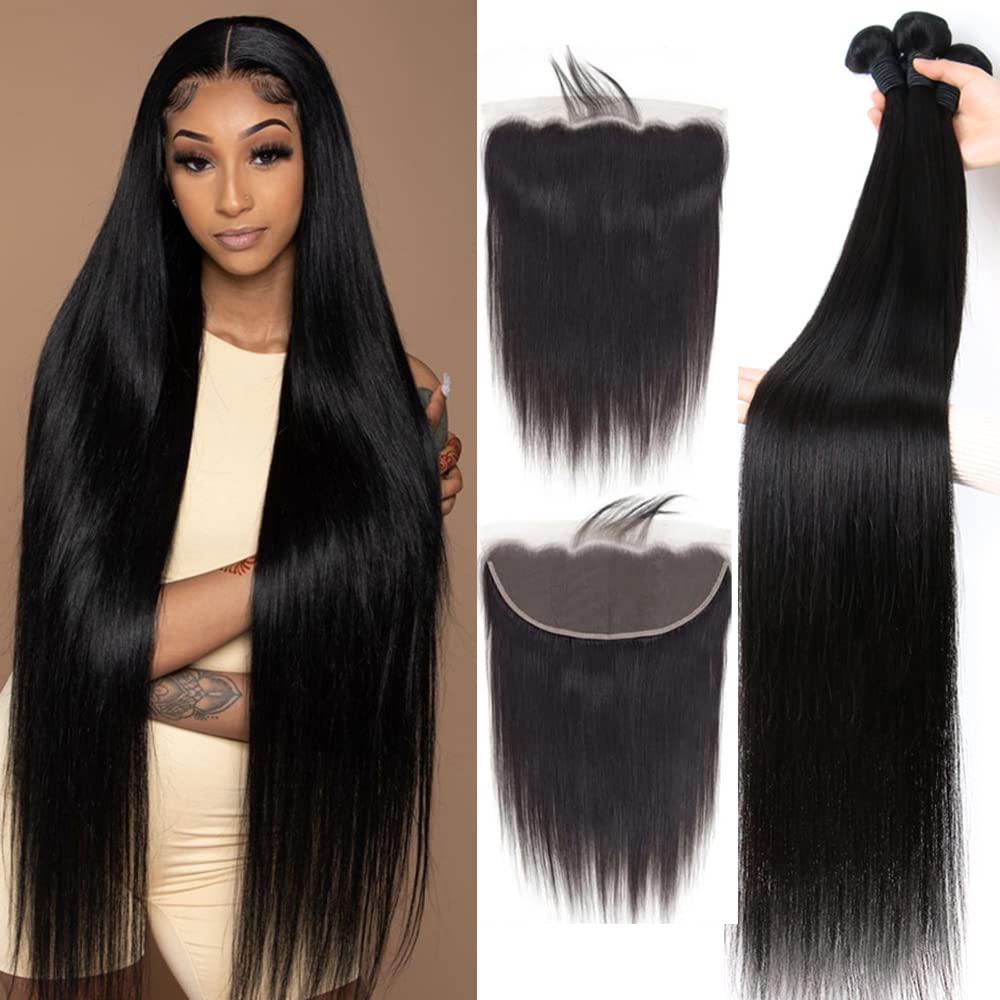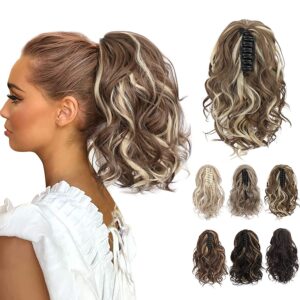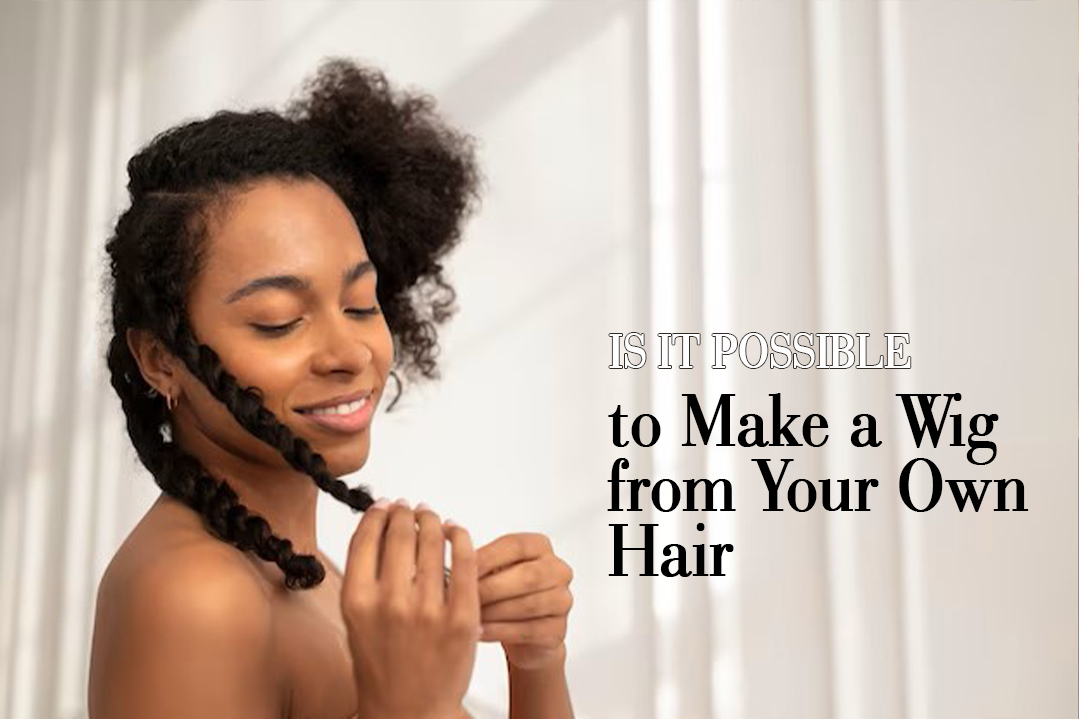The Feasibility of Making Wigs From Your Own Hair
Autologous Hair is a Potential Wig Material
Autologous hair refers to using an individual’s own hair as a material for making wigs. This involves collecting hair from the person who will wear the wig, processing it, and then creating a custom wig. While this might seem like a personalized and ideal solution, there are both advantages and limitations to consider.
Analyze the Advantages and Limitations of Autologous Hair in Making Wigs
Advantages
Natural Look and Feel
- Using one’s own hair ensures a natural and seamless look. The wig is more likely to match the individual’s natural texture, color, and overall appearance.
Customization
- Autologous wigs can be highly customized to suit individual preferences. This includes the choice of style, length, and color, providing a personalized and unique look.
Comfort and Familiarity
- Wearing a wig made from one’s own hair can be more comfortable, as the individual is already familiar with the feel and weight of their natural hair.
Potential for Medical Reasons
- In cases of hair loss due to medical conditions like chemotherapy, using autologous hair for wigs can be emotionally significant. It allows individuals to maintain a connection to their own hair during a challenging time.
Long-Term Solution
- As the wig is made from the individual’s own hair, it can potentially have a longer lifespan compared to synthetic wigs.

Limitations
Limited Availability
- The amount of autologous hair available for wig-making depends on the individual’s current hair length and thickness. This might limit the wig’s volume and styling possibilities.
Complex Process
- Collecting, processing, and crafting a wig from autologous hair is a more complex and time-consuming process compared to using pre-made synthetic or natural hair.
Cost
- Creating wigs from autologous hair can be more expensive due to the personalized nature of the process. This may not be financially feasible for everyone.
Maintenance Challenges
- Autologous wigs may require special care and maintenance, similar to caring for one’s natural hair. This includes regular washing, conditioning, and styling.
Not Suitable for All Hair Types
- In some cases, the texture or quality of an individual’s hair may not be suitable for wig-making. For example, damaged or very fine hair may not result in a durable and realistic-looking wig.
Limited Styling Options
- While customization is a benefit, autologous wigs might have limitations in terms of styling options compared to synthetic wigs or those made from other natural hair sources.

The Process of Making Wigs From Your Own Hair
Creating a wig from your own hair involves a detailed process to ensure a natural and personalized final product. Here’s a breakdown of the key steps involved.
Collect Hair Samples
Collecting hair samples is the initial step in making a wig from your own hair. This process involves:
1. Hair Donation
Decide on the length of hair you are willing to donate for the wig. Generally, a minimum length is required to create a functional wig.
2. Cutting the Hair
A professional stylist or wig maker will cut the hair according to the desired length and style. The hair should be cut in a way that preserves its integrity and minimizes damage.
3. Proper Handling
Handle the collected hair with care to avoid tangling or damaging the cuticles. The cut hair is then bundled and securely stored for further processing.

Clean and Treat Hair
Before the hair can be used to create a wig, it needs to be cleaned and treated to ensure its quality and longevity. This process involves:
1. Washing the Hair
The collected hair is thoroughly washed to remove any dirt, oils, or styling products. A gentle, sulfate-free shampoo is often used to preserve the hair’s natural moisture.
2. Conditioning
After washing, the hair is conditioned to restore moisture and improve its manageability. Conditioning helps keep the hair soft and smooth.
3. Drying
The treated hair is allowed to air dry or is gently blow-dried. Excessive heat is avoided to prevent damage to the hair fibers.
Design Wig Style
Once the hair samples are clean and treated, the next step is designing the style of the wig. This involves:
1. Consultation
A consultation with a wig specialist or stylist to discuss the desired wig style, length, and any specific preferences.
2. Customization
The stylist will assess the hair samples and work with you to design a wig that matches your natural hair color, texture, and style preferences. This may involve blending different shades of hair for a more natural look.
3. Measuring and Fitting
Measurements are taken to ensure the wig fits securely and comfortably. This includes measurements of the head circumference, temple-to-temple, and other relevant dimensions.

Making Wigs
The actual process of making the wig involves several intricate steps:
1. Base Construction
The base of the wig, often made of lace or another material, is constructed to fit the measurements taken during the design phase.
2. Ventilating
This is the process of individually tying each strand of hair to the wig base. The wig maker uses a ventilating needle to secure the hair, ensuring a natural and realistic appearance. This process is time-consuming and requires precision.
3. Knot Sealing
After ventilating, the knots securing the hair are often sealed with a specialized knot sealer to prevent shedding and increase the wig’s durability.
4. Styling
Once the wig is fully constructed, it is styled according to the agreed-upon design. This may include cutting, shaping, and styling the hair to achieve the desired look.
5. Quality Check
The finished wig undergoes a thorough quality check to ensure that it meets the specified criteria and adheres to the design requirements.
Creating a wig from your own hair is a labor-intensive process that requires skill and expertise. It is typically performed by professionals experienced in wig making. Keep in mind that the complexity of the process may vary based on factors such as the desired wig style, construction materials, and the individual characteristics of the donated hair. Consulting with a wig specialist throughout the process ensures that the final product meets your expectations and provides a natural, comfortable, and personalized solution.
The Effect of Using Your Own Hair to Make Wigs

Introduce the Actual Effect of Using Autologous Hair to Make Wigs
The utilization of autologous hair in wig-making produces a profound effect, offering wearers a unique and personalized solution. Autologous wigs provide an unparalleled level of authenticity, seamlessly blending with the wearer’s natural hair. This results in a remarkably natural look and feel, contributing to enhanced self-confidence and comfort. The emotional impact is particularly significant for individuals facing hair loss due to medical treatments, as autologous wigs offer a tangible connection to their own identity, fostering a sense of continuity and familiarity during challenging times. Beyond authenticity, these wigs can be fully customized to match individual style preferences, including color, length, and texture, allowing for a highly personalized and versatile aesthetic. The long lifespan of autologous wigs, when properly maintained, adds to their appeal, providing a lasting and reliable solution for those seeking a natural and enduring hair replacement option.
Analyze the Factors that Affect the Effect of Wigs
Several factors contribute to the overall effect of autologous wigs, influencing their appearance and wearer satisfaction. The quality of the donated hair is paramount; healthy, well-maintained hair translates to a more durable and aesthetically pleasing wig. Additionally, the length and thickness of the hair samples impact the volume and styling possibilities of the final wig. The expertise of the professionals involved, from the wig specialist to the stylist, plays a critical role in achieving the desired outcome. Proper maintenance and adherence to care instructions are essential to prevent tangling, shedding, and other issues that may affect the longevity and appearance of the autologous wig. Achieving an accurate match between the autologous wig and the wearer’s natural hair color is crucial for a seamless and realistic look, requiring skilled blending by the wig maker. Ultimately, the success of autologous wigs hinges on careful consideration of these factors, ensuring a natural, comfortable, and aesthetically pleasing solution for those seeking a personalized hair replacement option.
Things to Note When Making Wigs From Your Own Hair

The Precautions When Making Wigs
Creating wigs from one’s own hair involves a series of precautions to ensure a successful and satisfying outcome. Foremost, it’s essential to evaluate the overall health of the donor’s hair, as damaged or excessively processed hair may compromise the quality of the final wig. When deciding on the length of hair to donate, careful consideration is necessary, recognizing that the length impacts the styling options available. Prior to the cutting process, clear communication with the wig specialist is vital, establishing an agreement on the desired wig style, length, and any specific preferences. Seeking professional consultation from experienced wig specialists or stylists is crucial to guide individuals through the process, providing insights into the feasibility and customization options available. Additionally, maintaining realistic expectations about the final outcome is key, as while autologous wigs offer a natural appearance, differences in processing and styling may result in some variation from the individual’s original hairstyle.
Possible Risks and Side Effects
Despite the numerous benefits, the process of making wigs from one’s own hair carries potential risks and side effects. The quantity of available hair may be limited based on the donor’s hair length and thickness, impacting the overall volume and styling flexibility of the wig. Time and cost considerations should also be acknowledged, as the creation of autologous wigs is a labor-intensive process that may be more expensive than purchasing pre-made wigs. Individuals may experience allergic reactions to materials used in the wig-making process, such as adhesives or dyes, emphasizing the importance of conducting patch tests beforehand. Autologous wigs may demand meticulous maintenance, exceeding that of synthetic wigs, to prevent tangling and shedding. Additionally, the processing involved in creating the wig may subtly alter the texture of the hair, necessitating discussions with the wig specialist to manage expectations regarding any changes in the final product. Considering these factors and consulting with professionals ensures that the process of making wigs from one’s own hair is approached with caution and realistic expectations.
Conclusion
Possibilities of Using Your Own Hair to Make Wigs
In summary, using your own hair to make wigs, or autologous wigs, presents a range of possibilities that align with a desire for authenticity and personalization. These wigs offer a natural look and feel, providing a seamless match to your original hair’s texture, color, and overall appearance. The high level of customization allows individuals to choose styles, lengths, and colors that mirror their unique preferences, fostering a sense of self-expression. Autologous wigs, particularly valuable in medical contexts, create an emotional connection for those experiencing hair loss, providing a tangible link to their own identity. With proper care, these wigs boast longevity and versatility, mirroring the natural behaviors of one’s hair.
Future Research Directions
Looking forward, future research in wig-making could explore improved techniques for more efficient production and advanced materials for enhanced comfort and durability. Sustainability practices, such as eco-friendly materials and ethical hair sourcing, can contribute to a more environmentally conscious industry. Investigating the psychosocial impact of autologous wigs, especially in medical contexts, provides an avenue for understanding the emotional well-being of wearers. Affordability initiatives and research into preserving the quality of donated hair during the wig-making process can further expand the accessibility and appeal of autologous wigs, making personalized wig solutions a more viable option for a diverse range of individuals.










